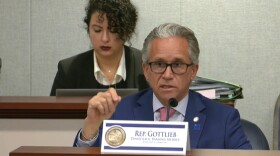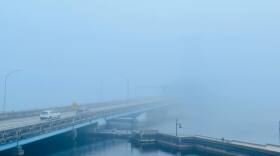Mound House Museum Manager Adam Knight has lofty ambitions. He and his staff have set their sights on museum accreditation. But they’re well aware that accreditation is a rare achievement.
“Only about 1 percent of museums in the United States are accredited,” said Knight. “There are only two museums in Southwest Florida that are currently accredited by the American Alliance of Museums.”

The benefits are enormous, starting with national recognition and positive public image.
“It’s really a stamp of approval … and would really increase our standing that the museum is handling things as we should, we’re operating as we should, and we’re one of the premier museums in the area,” Knight added. “That would help overall further our mission to engage the community in the island and the area’s history and preservation.”
Accreditation also affords increased credibility with funding agencies and donors, as well as improved relationships with other museums resulting in more loans and traveling exhibitions.
Toward this end, Scott Neel, a peer reviewer from the Museum Assessment Program, spent two days last week examining Mound House’s organizational structure, core documents and personnel.
“So what I’m here to do is to hopefully provide some suggestions that will help the city, the advisory committee, the Friends group and the staff to really make this museum the best it can possibly be,” Neel shared.
While the process is admittedly long and arduous, Neel thinks that Mound House is well on its way toward accreditation.
“From what I’ve seen already, it looks like a great little museum and should really be a tourist spot here on the island.”
In addition to providing an unforgettable high-quality museum experience, Mound House offers a wide variety of programs and tours for local residents, visitors and school groups which will continue to improve as staff and stakeholders work to attain full museum accreditation.

MORE INFORMATION:
Accreditation offers high-profile, peer-based validation of a museum’s operations and impact. It increases a museum’s credibility and value to funders, policy makers, insurers, community and peers. Accreditation also leverages change and helps facilitate loans between institutions.
Two core questions guide every accreditation review: (1) How well does the museum achieve its stated mission and goals; and (2) How well does the museum’s performance meet standards and best practices as they are generally understood in the museum field, as appropriate to its circumstances?
The accreditation process is centered on self-study and peer review and takes eight to 16 months to complete, and should be done every 10 years.
Over the past 40 years, participants have consistently realized a number of benefits from being accredited. Among them are national recognition of the museum’s commitment to excellence and the highest professional standards of museum operation and public service; a positive public image and validation of their work and accomplishments; a clearer sense of purpose and understanding of their strengths, goals, priorities and mission; an opportunity for staff and board to be thoughtful about their practice; a valuable tool for lobbying state and local governments, particularly for grants to support capital improvements; and increased levels of professionalism.
According to the American Alliance of Museums, the Bailey Matthews Shell Museum on Sanibel Island and the John and Mabel Ringling Museum of Art in Sarasota are the onlyfully accredited museums south of Tampa, although the Marie Selby Botanical Gardens is also accredited.
A number of other area museums have initiated the accreditation process, including the Baker Museum of Art, Collier City Museum, Naples Art Institute, Edison & Ford Winter Estates, Lee County Black History Society, State College of Florida Fine Art Gallery and Bishop Museum of Science and Nature in Bradenton, Venice Museum & Archives and Cape Coral Historical Society & Museum.
The Mound House sits atop a 2,000-year-old Calusa Indian mound on Estero Island/Fort Myers Beach.
The Calusa Indians dominated most of the southwest region of Florida until the 1600s. They assembled in small villages or fishing stations. They possessed a vast knowledge of seamanship and built seaworthy canoes. They also engineered water courts with terraced mounds for higher and safer ground from high tides and hurricanes.
The shell mounds that the Calusa people built are called middens. One such mound is where Mound House sits today. Although eroded and altered by human use over the last century, the one on Fort Myers Beach is still a substantial midden, and home to the unique exhibit called "Stories Beneath Our Feet".
While both a unique archaeological and fascinating historical site, Mound House also offers a variety of programs, including kayak and walking tours.
Built as a Tudor home with dock and cistern in 1906, it was originally known as the "Mound Villa," then in 1909, as the "Bungalow by the Banyan" when the brick structure was added.

The mound was partially destroyed when new owners William and Florence Long purchased the property, which was then excavated to establish the "Shell Mound" subdivision. By 1958, a swimming pool and large Florida room was added with extensive landscaping. Known only as the "Long Estate", it served as a popular setting for fashion shows and club fundraisers. In later years, the porch and side entrance were altered with a caregiver's addition.
By 1995, the Town of Ft. Myers Beach incorporated, and Mound House was obtained as its first preservation effort. The town saved the structure and site from being demolished and replaced by development. Today this property is a protected archaeological and historic site.
Adam Knight serves as Museum Manager at The Mound House. Before taking the position at the Mound House, Adam was the Lead Historian and Outreach Coordinator at The Edison & Ford Winter Estates. He also did an internship at The Florida Museum of Natural History and has a Master Degree from Johns Hopkins University.
WGCU is your trusted source for news and information in Southwest Florida. We are a nonprofit public service, and your support is more critical than ever. Keep public media strong and donate now. Thank you.







